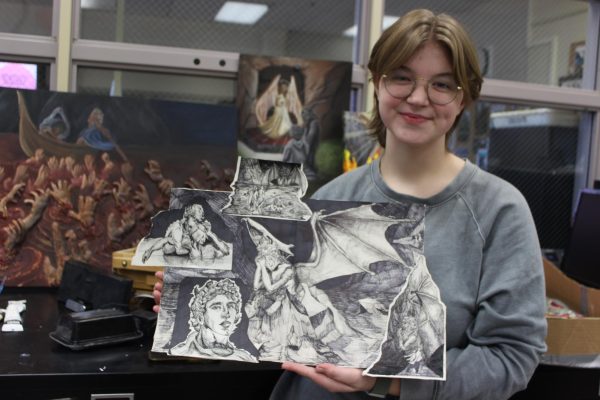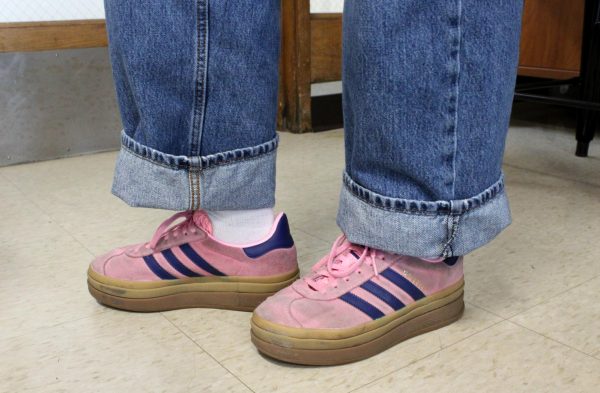Aesthetics: Perfectly problematic
Items commonly associated with the “VSCO” girl aesthetic. The VSCO girl aesthetic became popular on TikTok in the summer of 2019, due to videos both romanticizing and criticizing the style. The aesthetic has an “I woke up like this” look, that consists of oversized shirts, Hydro Flasks, and messy buns tied with scrunchies.
It’s important to avoid judging anyone’s preferences or interests just based on their style and appearance. Many students nowadays identify with an aesthetic. Whether that’s Goth, Grunge, VSCO, Y2K, Preppy or Bohemian, they are all means of self expression, but they do not define a person.
Similar to fashion trends, popular aesthetics come and go. In 2019, when the social media app VSCO was at its peak, Hydroflasks, scrunchies, and Birkenstocks became a staple accessory to everyone’s summer outfits. Aesthetics like “preppy” and “Bohemian” have also resurfaced, mirroring fashion trends from the 1970s and 1990s. Aesthetics aren’t necessarily connected solely to fashion either. They can be linked to room decor, hobbies and music interest.
As children of the digital age, so much of our lives and our values are connected to the media we consume. This has made it easy for aesthetics to become more pronounced in our society. Instagram and TikTok have the ability to quickly spread new fashion trends that catch the attention of anyone looking for a specific style to adhere to.
To some, aesthetics make it easier to complete mundane tasks like school, sports, clubs or work, especially during times of stress and lack of motivation. Glamorizing whatever it is you are doing by connecting it to your aesthetic makes the task more appealing.
For example, getting home from a long day of school with homework to do can feel overwhelming, but doing it in a coffee shop while listening to music can make it feel like an experience. Shows like “Gilmore Girls” have inspired a romanticized outlook on getting good grades and prioritizing academics by showing the main character Rory Gilmore getting her work done in a coffee shop. A viewer who loves the show and the character is influenced to do the same thing. An aesthetic is often the perfect way to motivate yourself.
However, not all aspects of aesthetics are positive. On social media, many aesthetics can be harmful. Spec aesthetics like the “clean girl aesthetic” on Tik Tok that showcases skinny, clear-skinned, straight-haired white women. The slicked bun, glowing skin, and “natural” makeup look historically worn by Black and Brown women have been reduced to a tik-tok trend. The trend also showcases a variety of expensive skincare and makeup products. This aesthetic essentially excludes anyone with facial blemishes and a lack of money.
Growing up, we have continued to shift through different interests and hobbies that often didn’t dictate our style. Before our teenage years it didn’t matter as much, but upon entering high school, we start to think more carefully about how we present ourselves because we are more conscious of our fellow students’ judgements and perceptions.
When someone commits to an aesthetic, sometimes they feel like it boxes them in. For some, aesthetics come with a fear of dressing differently than the style previously established, and how others may judge you for it. This quickly becomes problematic.
For someone who dresses goth in dark clothes, spiky jewelry and intricate makeup, the idea of dressing casual for a day may seem out of the question, solely because they fear they have placed themself in a permanent category. The same goes for someone who dresses casually most of the time but wants to try a new fashion trend or aesthetic. They may be scared to try something new because of possible judgment from their peers. Dressing differently or standing out from your peers can be especially scary, and daring to try something new and unique because it interests you is difficult.
Aesthetics are used primarily for self expression, but do not define a person. It shouldn’t matter whether you’re an athlete, straight A student, or an artist, you should be able to dress however you feel comfortable. While aesthetics can be a creative way to express yourself through fashion, it should never become a stressor to the point where you dread picking out your outfit in the morning.



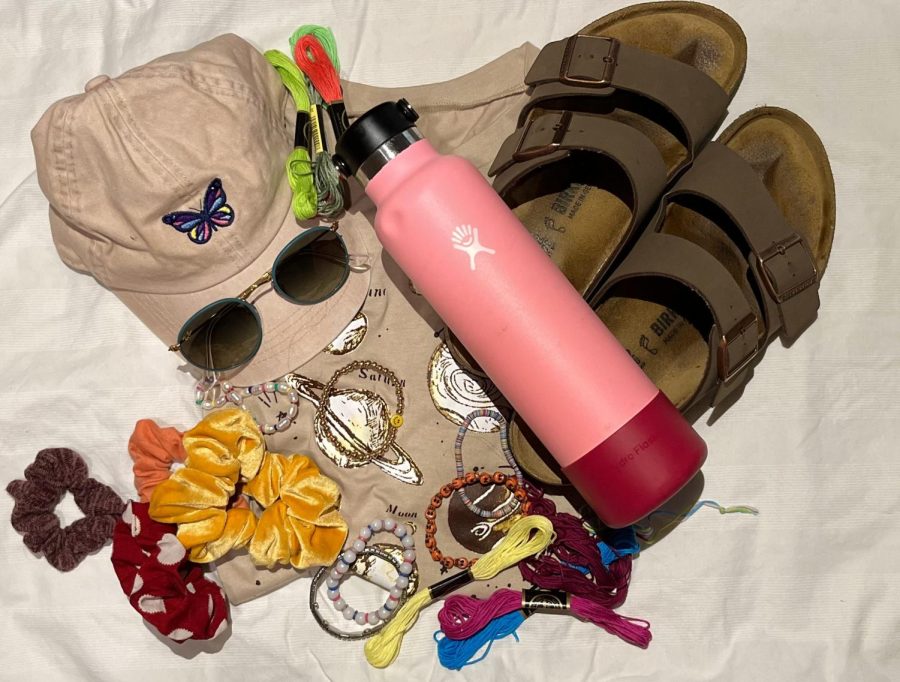

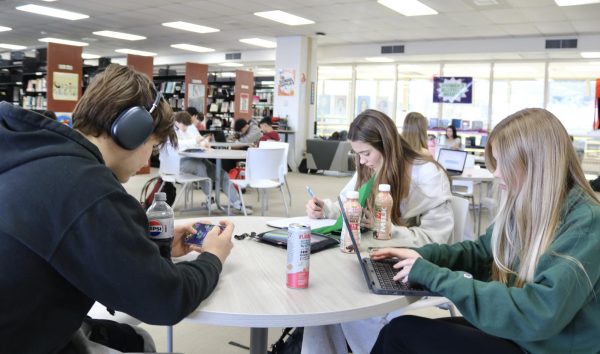
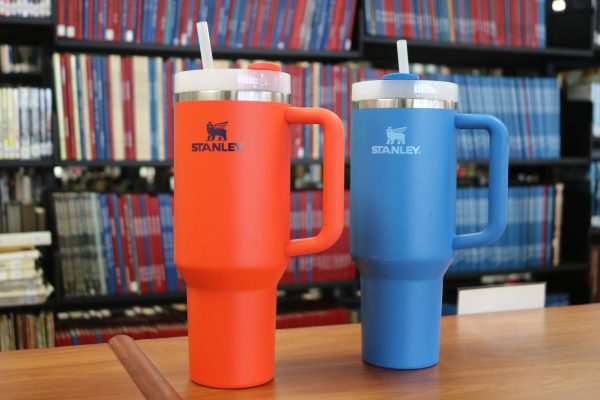


![Senior River Thompson joins the Jazz Ensemble by singing “That Old Black Magic” by Mercer and Arlen Arr. Mark Taylor, along with senior Annie Brody on guitar and junior Thomas Teixeira on bass, earning big applause. “[The concert had] great energy because it's the last [jazz concert] of the year,” Brody said.](https://www.lhsdoi.com/wp-content/uploads/2025/04/Eight-That-Old-Black-Magic-600x400.jpg)
![Mr. Abullh Ali, manager/assistant, helps open Queen Yemeni Coffee in downtown Libertyville at 606 North Milwaukee Ave. With the help of employees such as manager and LHS senior Yousef Taha, they are able to bring the Yemeni and Ethiopian culture to Libertyville by using their Queen spices, cinnamon and cardamom in their drinks such as Adani Chai, which is inspired by Sheda, the Queen of Yemen and Ethiopia. “The history of our coffee [is] a long history and we believe that Yemen and Ethiopia started the coffee and we are bringing something unique to the community,” Mr. Ali said.](https://www.lhsdoi.com/wp-content/uploads/2025/04/Photo-1-600x400.jpg)
